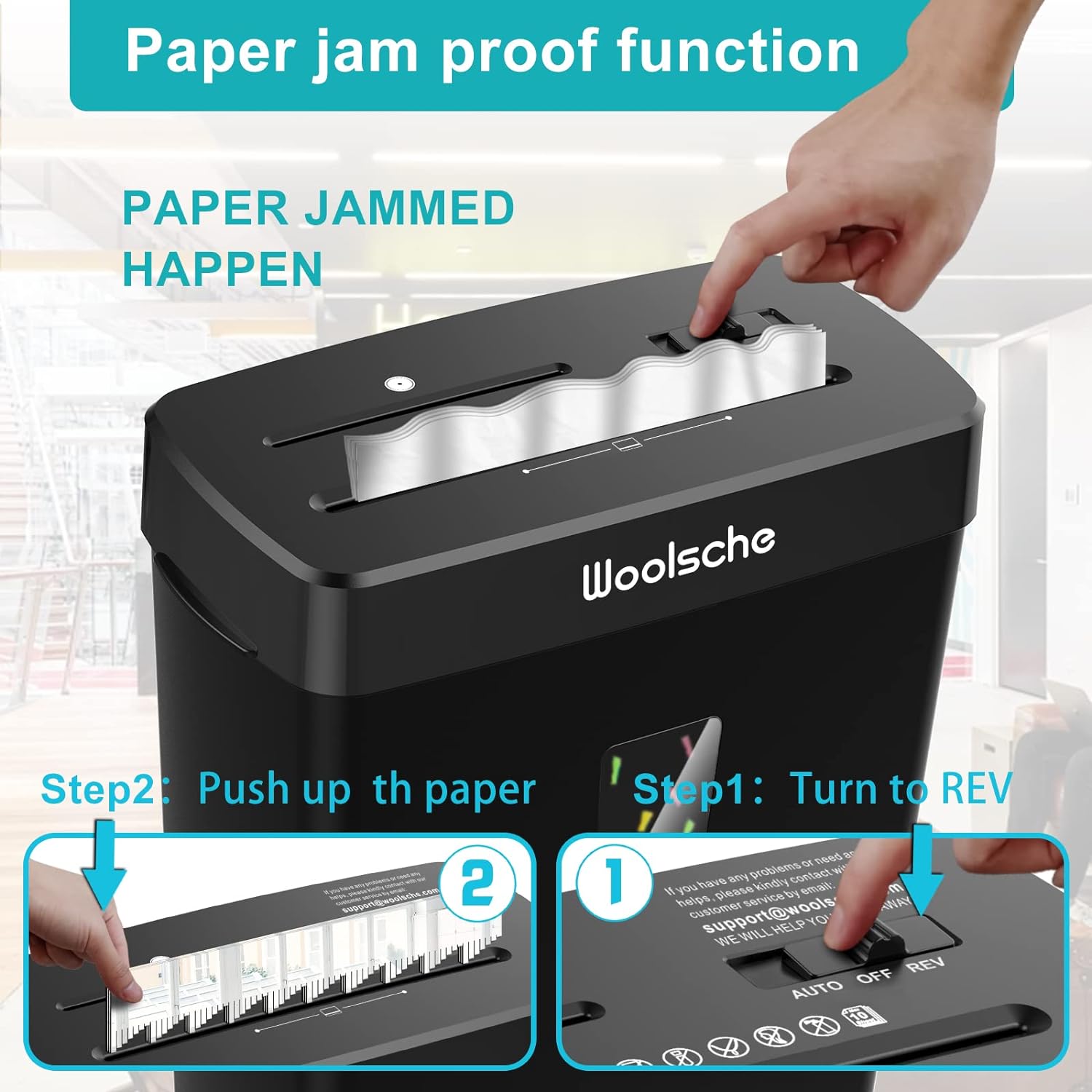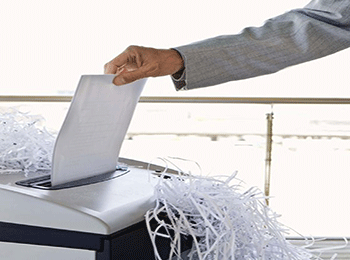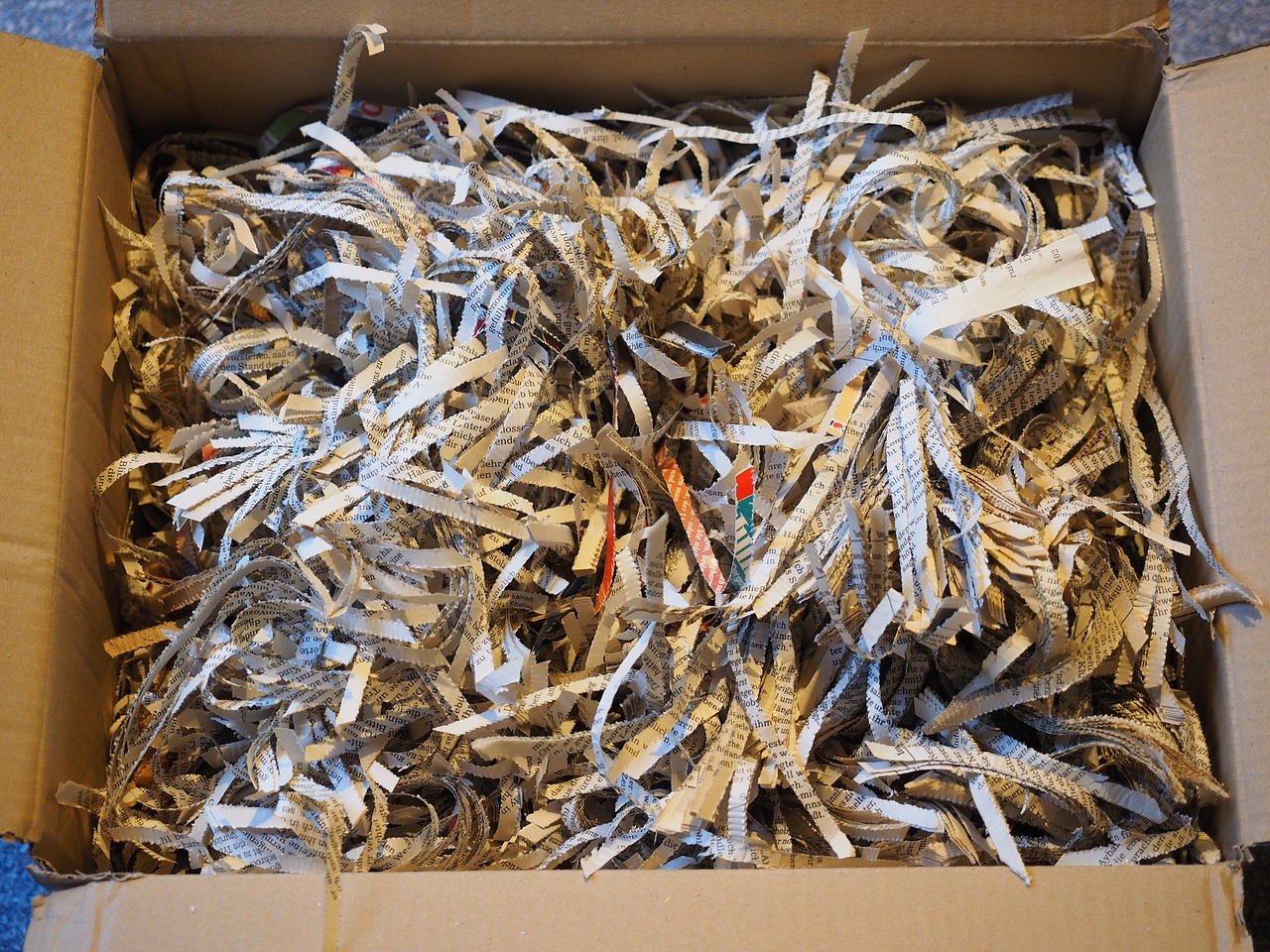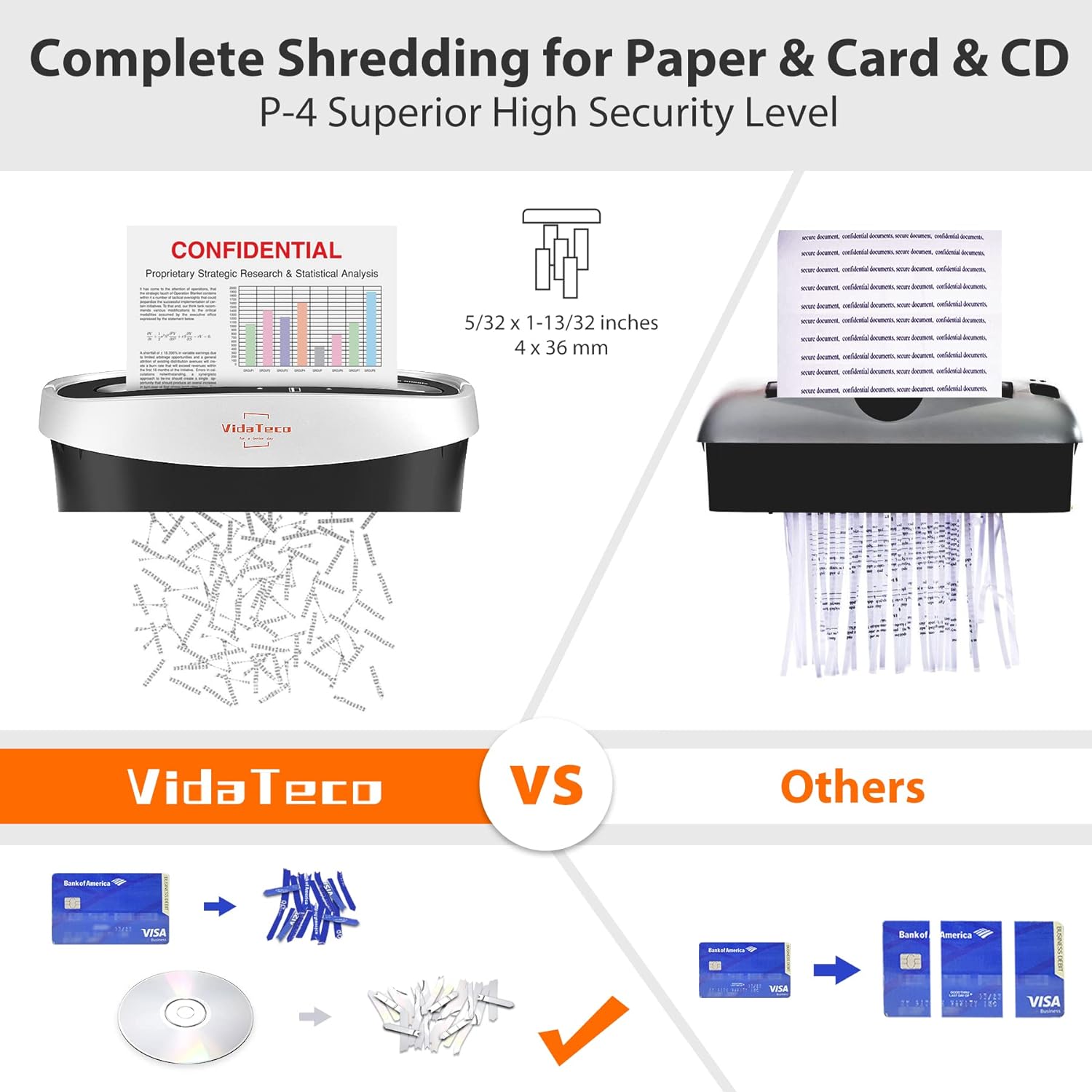Imagine a world where your confidential documents are safe and secure, with no chance of falling into the wrong hands. Well, the good news is that there is a simple solution: the cross-cut shredder. But is this device really good enough to protect your sensitive information? In this article, we will explore the benefits of the cross-cut shredder and delve into why it might just be the perfect tool for all your shredding needs. So say goodbye to sleepless nights worrying about identity theft and say hello to peace of mind with a cross-cut shredder by your side.
Benefits of Cross Cut Shredders
Enhanced Security
When it comes to protecting sensitive information, cross cut shredders offer enhanced security compared to other types of shredders. Cross cut shredders use two perpendicular cutting blades to slice documents into small, confetti-like pieces. This makes it significantly more difficult for anyone to piece together the shredded documents and retrieve the information. With a cross cut shredder, you can have peace of mind knowing that your confidential information is being effectively destroyed.
Effective Document Destruction
Cross cut shredders are highly effective in destroying documents and ensuring that the information contained within them cannot be easily recovered. The two blades of the shredder work together to thoroughly cut and shred documents into tiny pieces. This makes it virtually impossible for anyone to reconstruct the shredded documents. Whether you need to dispose of personal documents at home or confidential business files in the office, a cross cut shredder will provide you with the effective document destruction you need.
Reduced Risk of Identity Theft
Identity theft is a serious concern in today’s digital age. Improper disposal of personal and financial documents can leave individuals vulnerable to identity theft and fraud. By using a cross cut shredder, you can greatly reduce the risk of identity theft. The small, indistinguishable pieces of shredded documents make it nearly impossible for thieves to obtain vital information such as bank account numbers, social security numbers, or other sensitive data. By investing in a cross cut shredder, you are taking an important step towards protecting yourself and your personal information from falling into the wrong hands.
Compliance with Data Protection Regulations
Data protection regulations, such as the General Data Protection Regulation (GDPR), impose strict requirements on businesses and organizations to protect the personal data of individuals. Failure to comply with these regulations can result in severe penalties and reputational damage. By using a cross cut shredder to destroy confidential documents, businesses can ensure they are meeting the necessary compliance requirements. Cross cut shredders provide a level of security that aligns with the standards set by data protection regulations, helping organizations maintain their legal and ethical obligations.
Factors to Consider When Choosing a Cross Cut Shredder
Security Level
When choosing a cross cut shredder, the security level is an important factor to consider. Shredders are assigned security levels based on the size of the shredded paper particles and the level of security they provide. The higher the security level, the smaller the shredded particles and the more secure the shredder. For most personal and small business needs, a shredder with a security level of P-3 or P-4 is typically sufficient. However, for organizations dealing with highly sensitive information, a higher security level, such as P-5 or P-6, may be necessary.
Sheet Capacity
The sheet capacity of a shredder refers to the number of sheets it can shred at once. The higher the sheet capacity, the more efficiently you can dispose of a large volume of documents. Consider the volume of documents you typically need to shred and choose a shredder with a sheet capacity that meets your needs. Keep in mind that overloading a shredder can lead to paper jams and reduce its effectiveness.
Cutting Speed
The cutting speed of a shredder determines how quickly it can shred documents. If you have a large volume of documents to shred regularly, choosing a shredder with a faster cutting speed can save you time and increase productivity. However, for personal or small-scale use, a slower cutting speed may be perfectly adequate.
Continuous Run Time
The continuous run time refers to the length of time a shredder can operate before it needs to cool down. Shredders with longer continuous run times are more convenient for high-volume shredding, as they can operate for longer periods without interruption. Consider your typical shredding needs and choose a shredder with a continuous run time that accommodates your requirements.
Waste Capacity
The waste capacity of a shredder determines how much shredded material it can hold before it needs to be emptied. If you have a large volume of documents to shred, choose a shredder with a larger waste capacity to minimize the frequency of emptying. However, keep in mind that larger waste capacities may also result in bulkier shredders.
Safety Features
Safety should always be a top priority when using any type of machinery, including shredders. Look for shredders that come equipped with safety features such as auto-stop and jam prevention mechanisms. These features help prevent accidents and ensure smooth operation.
Size and Portability
Consider the space you have available for a shredder and choose a size that fits your needs. If you have limited space, compact or portable shredders may be a better option. However, keep in mind that smaller shredders may have limitations in terms of sheet capacity, cutting speed, and waste capacity.
Noise Level
Shredders can produce varying levels of noise during operation. If noise is a concern for you, look for shredders that are designed to operate quietly. Some shredders come with noise reduction technology, making them suitable for use in quiet office environments or homes where noise can be disruptive.
Maintenance Needs
Like any piece of equipment, shredders require regular maintenance to ensure optimal performance and longevity. Consider the maintenance needs of a shredder, including oiling requirements, and choose one that fits your maintenance capabilities and schedule. Some shredders come with self-cleaning features or indicators that alert you when maintenance is required.
Price and Value
Price is always a consideration when purchasing any product. Set a budget for your shredder and look for options within your price range. However, remember that it is important to prioritize value over price. Investing in a high-quality shredder that meets your needs and provides long-term durability and performance is essential for maximum effectiveness and return on investment.

Alternatives to Cross Cut Shredders
Strip Cut Shredders
Strip cut shredders are an alternative to cross cut shredders that cut documents into long, thin strips. While they offer a level of document destruction, they do not provide the same level of security as cross cut shredders. As the strips are longer and more visible, it may be easier for someone to reconstruct the shredded documents. Strip cut shredders are typically less expensive than cross cut shredders and may be suitable for individuals or organizations with low-security document destruction needs.
Micro Cut Shredders
Micro cut shredders offer even higher security than cross cut shredders. They cut documents into extremely tiny particles, making reconstruction nearly impossible. Micro cut shredders are ideal for organizations that handle exceptionally sensitive information, such as financial institutions or government agencies. However, micro cut shredders are typically more expensive and have a lower sheet capacity and cutting speed compared to cross cut shredders.
Industrial Shredders
For organizations with high-volume shredding needs, industrial shredders provide the capability to handle large quantities of documents quickly and efficiently. These powerful machines are designed to handle heavy loads and can handle more than just paper. Industrial shredders can shred various materials such as plastic, CDs, and hard drives. While they offer superior shredding capabilities, industrial shredders are larger, more expensive, and may not be suitable for personal or small-scale use.
Digital Document Destruction
As businesses and organizations rely more on digital storage and document management systems, the need for physical document destruction may decrease. Digital document destruction refers to the secure and permanent deletion of electronic files and documents. This can be achieved using specialized software or services that comply with data protection regulations. While digital document destruction provides a secure method of information disposal, it is important to ensure that proper procedures and protocols are followed to prevent data breaches or unauthorized access.
Real-World Effectiveness of Cross Cut Shredders
Case Studies on Successful Document Destruction
Numerous real-world case studies demonstrate the effectiveness of cross cut shredded documents in preventing unauthorized access to sensitive information. For example, in a case involving a healthcare organization that improperly disposed of patient records, the use of a cross cut shredder was instrumental in mitigating the risk of data breaches and ensuring compliance with privacy regulations. The shredded documents were rendered unreadable and unusable, thereby protecting the privacy and security of patients’ personal information.
Identity Theft Prevention Statistics
Identity theft is a prevalent crime that can have severe consequences for individuals and organizations alike. According to statistics from the Federal Trade Commission (FTC), identity theft accounted for 20% of all reported fraud cases in 2020. Properly shredding documents, especially those containing personal and financial information, significantly reduces the risk of identity theft. Cross cut shredders play a crucial role in preventing identity theft by destroying documents in a manner that makes it extremely difficult for thieves to access and misuse the information.
Comparison with Other Shredding Methods
When comparing cross cut shredders with other shredding methods, such as strip cut or micro cut, cross cut shredders consistently demonstrate higher levels of effectiveness and security. While strip cut shredders provide basic document destruction, the longer strips are easier to reassemble compared to the confetti-like particles produced by cross cut shredders. Micro cut shredders offer the highest level of security, but they also come with higher costs and lower sheet capacities. Cross cut shredders strike a balance between security, efficiency, and cost-effectiveness, making them the preferred option for most personal and business shredding needs.
The Importance of Proper Shredding Practices
Protecting Sensitive Information
Proper shredding practices are essential for protecting sensitive information and preventing unauthorized access to personal and confidential data. Whether it is financial records, medical documents, legal documents, or any other type of sensitive information, shredding ensures that the information is destroyed beyond recovery. Failure to implement proper shredding practices can lead to devastating consequences, including identity theft, financial loss, and damage to individuals’ and organizations’ reputations.
Legal and Ethical Considerations
In many jurisdictions, there are legal requirements and regulations regarding the proper disposal of sensitive information. Data protection laws, such as the GDPR in the European Union, impose obligations on organizations to protect personal data and ensure its secure destruction. Failure to comply with these laws can result in severe penalties and legal consequences. Ethically, individuals and organizations have a responsibility to safeguard sensitive information and protect the privacy of individuals. Proper shredding practices align with legal and ethical frameworks, allowing individuals and organizations to fulfill their obligations.
Data Breach Consequences
Data breaches can have severe and long-lasting consequences for individuals and organizations. The exposure of sensitive information can lead to identity theft, financial loss, and damage to reputations. The costs associated with data breaches, including legal fees, regulatory fines, and potential lawsuits, can be staggering. By implementing proper shredding practices, the risk of data breaches is significantly reduced, ensuring that sensitive information is destroyed and preventing it from falling into the wrong hands.
Industry Best Practices
Across various industries, there are established best practices for document destruction and data protection. These best practices include the use of cross cut shredders for effective and secure document destruction. Following industry best practices ensures that individuals and organizations stay ahead of emerging threats and meet the expected standards of security and compliance. By adopting these practices, individuals and organizations can demonstrate their commitment to protecting sensitive information and maintaining the trust of their customers and clients.
Common Concerns about Cross Cut Shredders
Effectiveness for Different Materials
Cross cut shredders are primarily designed for paper documents. While they can handle staples and paperclips, certain materials may not be suitable for shredding in a cross cut shredder. Items such as credit cards, CDs, or hard drives require specialized shredders designed for those materials. When considering a cross cut shredder, evaluate the types of materials you frequently need to shred. If your shredding needs extend beyond paper, consider a shredder that can handle multiple materials or invest in specific shredders for each material.
Potential Reconstruction of Shredded Documents
While cross cut shredders provide a high level of security, it is theoretically possible for determined individuals to attempt to reconstruct shredded documents. This, however, would be an extremely challenging and time-consuming task. The confetti-like pieces produced by cross cut shredders make it highly impractical to reconstruct documents, especially when properly mixed with other shredded material. The risk of successful reconstruction is negligible, especially for individuals and organizations following proper shredding practices.
Maintenance and Troubleshooting
As with any mechanical equipment, cross cut shredders require regular maintenance to ensure optimal performance. This includes periodically lubricating the cutting blades and emptying the waste bin. Some shredders may require additional maintenance or troubleshooting actions, such as clearing paper jams. However, most shredders come with user-friendly maintenance instructions and may offer customer support or warranty options to assist with any troubleshooting needs. By following the manufacturer’s recommendations and conducting regular maintenance, you can ensure the longevity and effectiveness of your cross cut shredder.
Environmental Impact
The environmental impact of shredding is an important consideration for individuals and organizations committed to sustainable practices. While shredding paper does consume energy and produce waste, it is also important to weigh the environmental benefits of proper document destruction. Shredding prevents the improper disposal of sensitive information, which can lead to greater environmental harm if the information is accessed and misused. Additionally, many shredders now come with eco-friendly features such as energy-saving modes and recycling bins for shredded materials. Choosing an environmentally conscious shredder and recycling the shredded materials can help minimize the environmental impact of shredding practices.
Tips for Maximizing the Effectiveness of a Cross Cut Shredder
Understanding Security Levels
To maximize the effectiveness of your cross cut shredder, it is crucial to understand the security levels associated with different shredding options. Familiarize yourself with the security level classifications, such as P-3, P-4, P-5, and P-6, and choose a shredder that aligns with your specific security requirements. This will ensure that your shredded documents are sufficiently protected and meet the necessary standards for data protection.
Proper Document Preparation
To optimize the shredding process and avoid paper jams, it is important to prepare your documents properly. Remove any staples, paperclips, or other non-shreddable materials from the documents before feeding them into the shredder. Separate different types or sizes of paper to prevent jamming. Taking the time to properly prepare your documents will ensure smooth operation and prevent unnecessary interruptions.
Regular Maintenance
Regular maintenance is essential for the continued effectiveness of your cross cut shredder. Follow the manufacturer’s recommendations for lubricating the cutting blades and clearing the waste bin. Regularly check for signs of wear or damage and address any issues promptly. By conducting routine maintenance, you can prolong the lifespan of your shredder and maintain its optimal performance.
Secure Disposal of Shredded Material
After shredding documents, it is important to securely dispose of the shredded material. This can be achieved by placing it in designated secure disposal bins or bags. Avoid leaving shredded material exposed or unattended, as it can potentially be accessed or reconstructed. Properly disposing of the shredded material completes the document destruction process and ensures that the information remains secure even after shredding.
Storage and Retention Policies
Implementing proper storage and retention policies is an additional step to maximize the effectiveness of your cross cut shredder. By establishing guidelines for document storage and retention, you can minimize the volume of documents requiring shredding and ensure that only necessary documents are shredded. Regularly review and update these policies to maintain an efficient document management system and reduce the risk of unnecessary exposure of sensitive information.
Choosing the Right Cross Cut Shredder for Your Needs
Personal or Home Use
For personal or home use, it is important to choose a cross cut shredder that balances security, convenience, and affordability. Consider a shredder with a security level of P-3 or P-4, which provides a sufficient level of security for most personal needs. Look for a shredder with a sheet capacity and waste capacity that can accommodate your typical shredding needs. Additionally, consider factors such as size, noise level, and maintenance requirements to find a shredder that fits seamlessly into your home environment.
Small Business or Office Use
Small businesses and offices often handle a larger volume of documents, requiring a cross cut shredder that can effectively manage higher sheet capacities and continuous run times. Look for shredders with security levels ranging from P-4 to P-5, depending on the level of sensitivity of the documents being shredded. Consider a shredder with a larger waste capacity to minimize the frequency of emptying. Safety features and noise reduction technology are additional considerations for office use.
Large Corporation or Enterprise Use
Large corporations and enterprises typically require high-capacity shredders to handle extensive shredding needs across multiple departments or locations. Industrial-grade cross cut shredders are designed for heavy-duty shredding and can handle large volumes of documents efficiently. These shredders often come with advanced safety features, longer continuous run times, and higher security levels to ensure compliance with data protection regulations and maintain the security of sensitive information.
Special Considerations for Government and Healthcare
Government organizations and healthcare facilities handle particularly sensitive information and therefore require cross cut shredders that meet strict security standards. Micro cut shredders are often recommended for these industries due to their superior shredding capabilities. Look for shredders with the highest security levels, such as P-6, to ensure the utmost protection of classified or confidential information. Additionally, consider purchasing shredders that comply with specific industry certifications or standards to address any regulatory requirements.
The Future of Cross Cut Shredders
Technological Advancements
As technology continues to advance, cross cut shredders are likely to benefit from improved performance, efficiency, and user-friendly features. Advancements in cutting blade technology may result in even smaller shredding particles, further enhancing security. Internet connectivity and smart features may be integrated into shredders, allowing for remote monitoring, maintenance notifications, and automated processes.
Integration with Digital Security Measures
As the digital world becomes increasingly interconnected, cross cut shredders may be integrated with digital security measures to provide comprehensive data protection. Features such as barcode scanning or QR code recognition may be incorporated into shredders to ensure proper document tracking and disposal. Integration with digital encryption and authentication systems may allow for secure transfer of documents between digital and physical formats.
Waste Management and Recycling Innovations
Sustainable waste management practices are becoming more important in all aspects of life, including document destruction. Innovations in waste management and recycling technologies may lead to more efficient and environmentally friendly disposal of shredded material. Shredders may be designed to minimize waste generation or to facilitate recycling by separating different materials for appropriate disposal.
Emerging Regulations and Standards
As the importance of document security and data protection continues to grow, new regulations and standards may emerge to address evolving threats and technology. Cross cut shredders may need to meet more stringent security requirements or comply with specific industry standards. Staying informed about emerging regulations and technology trends will be crucial in selecting the most effective cross cut shredder for your needs.
Conclusion
Cross cut shredders offer numerous benefits, including enhanced security, effective document destruction, reduced risk of identity theft, and compliance with data protection regulations. When choosing a cross cut shredder, consider factors such as security level, sheet capacity, cutting speed, continuous run time, waste capacity, safety features, size and portability, noise level, maintenance needs, and price and value. Alternatives to cross cut shredders include strip cut shredders, micro cut shredders, industrial shredders, and digital document destruction. Real-world effectiveness of cross cut shredders is supported by case studies, identity theft prevention statistics, and comparisons with other shredding methods. Proper shredding practices are crucial for protecting sensitive information, adhering to legal and ethical considerations, mitigating data breach consequences, and following industry best practices. Common concerns, such as effectiveness for different materials, potential reconstruction of shredded documents, maintenance and troubleshooting, and environmental impact, can be addressed through proper knowledge and practices. Maximizing the effectiveness of a cross cut shredder involves understanding security levels, proper document preparation, regular maintenance, secure disposal of shredded material, and implementing storage and retention policies. Choosing the right cross cut shredder depends on personal, small business, office, or enterprise needs, with special considerations for government and healthcare. The future of cross cut shredders may bring technological advancements, integration with digital security measures, waste management and recycling innovations, and emerging regulations and standards. By utilizing a cross cut shredder and implementing proper practices, individuals and organizations can protect sensitive information, prevent unauthorized access, and ensure compliance with data protection regulations.



